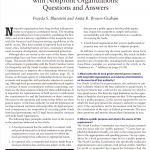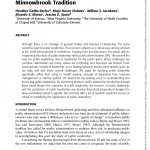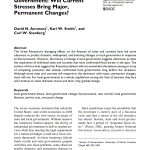Local Government Contracts with Nonprofit Organizations: Questions and Answers

Local Government Contracts with Nonprofit Organizations: Questions and Answers
Nonprofit organizations have long worked with governments to respond to community needs. The resulting
partnerships have been powerful, combining the flexibility and service-delivery capabilities of the nonprofit sector
with the financial and direction-setting capabilities of the public sector. They have resulted in improved local services in
many areas, including human services, community development, economic development, and environmental protection. Although they are touted as the wave of the future, these partnerships have not been without their fair share of challenges. This article follows other recent efforts by the Institute of Government, in partnership with the North Carolina Center for Nonprofits and the North Carolina Association of County Commissioners, to improve the relationships between local governments and nonprofits (see the sidebar, page 33). It focuses on the legal aspects of relationships between local governments and nonprofits, with particular attention to contracting. Although local governments and nonprofits work together or interact in many circumstances without contracting, contracts are the most common vehicles for these collaborations. It is important for representatives of both sectors to understand
the requirements for and the limitations on these contracts.
Cite as:
Bluestein, Frayda S. and Anita R. Brown-Graham. “Local Government Contracts with Nonprofit Organizations: Questions and Answers.” Popular Government 67:1 (2001): 32-44.
…










